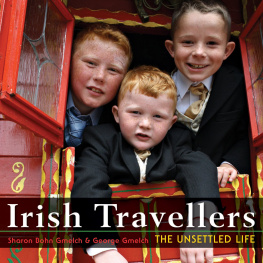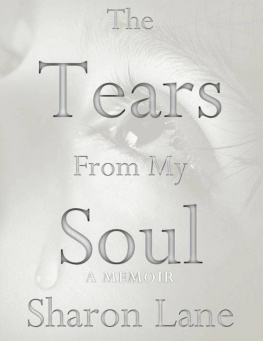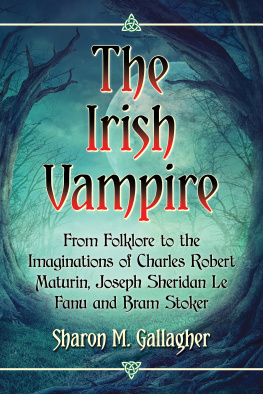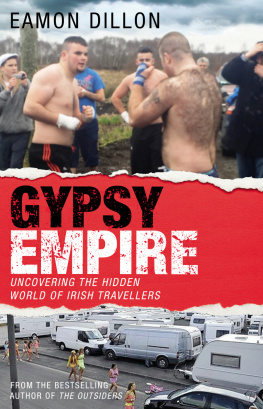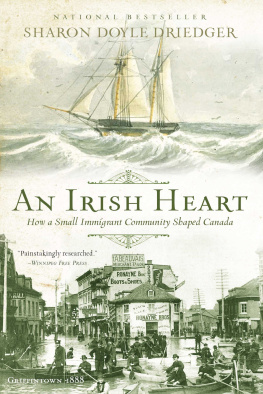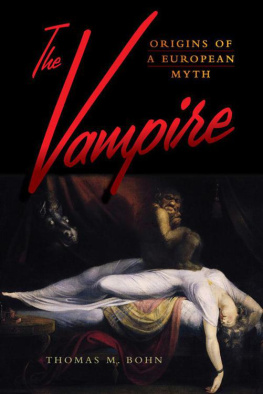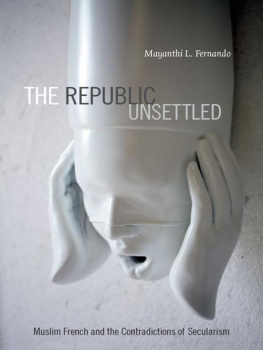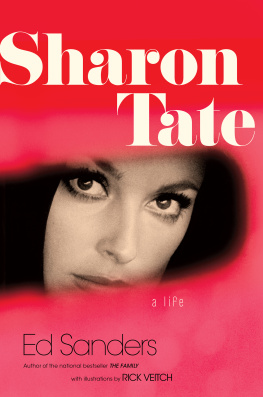Sharon Bohn Gmelch - Irish Travellers: The Unsettled Life
Here you can read online Sharon Bohn Gmelch - Irish Travellers: The Unsettled Life full text of the book (entire story) in english for free. Download pdf and epub, get meaning, cover and reviews about this ebook. year: 2014, publisher: Indiana University Press, genre: Home and family. Description of the work, (preface) as well as reviews are available. Best literature library LitArk.com created for fans of good reading and offers a wide selection of genres:
Romance novel
Science fiction
Adventure
Detective
Science
History
Home and family
Prose
Art
Politics
Computer
Non-fiction
Religion
Business
Children
Humor
Choose a favorite category and find really read worthwhile books. Enjoy immersion in the world of imagination, feel the emotions of the characters or learn something new for yourself, make an fascinating discovery.
- Book:Irish Travellers: The Unsettled Life
- Author:
- Publisher:Indiana University Press
- Genre:
- Year:2014
- Rating:3 / 5
- Favourites:Add to favourites
- Your mark:
- 60
- 1
- 2
- 3
- 4
- 5
Irish Travellers: The Unsettled Life: summary, description and annotation
We offer to read an annotation, description, summary or preface (depends on what the author of the book "Irish Travellers: The Unsettled Life" wrote himself). If you haven't found the necessary information about the book — write in the comments, we will try to find it.
Irish Travellers: The Unsettled Life — read online for free the complete book (whole text) full work
Below is the text of the book, divided by pages. System saving the place of the last page read, allows you to conveniently read the book "Irish Travellers: The Unsettled Life" online for free, without having to search again every time where you left off. Put a bookmark, and you can go to the page where you finished reading at any time.
Font size:
Interval:
Bookmark:

Irish Travellers
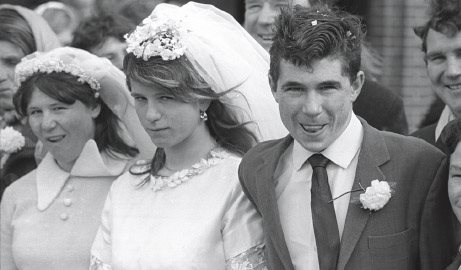
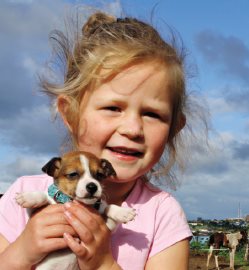

Sharon Bohn Gmelch & George Gmelch
Irish Travellers
THE UNSETTLED LIFE
INDIANA UNIVERSITY PRESSBLOOMINGTON INDIANAPOLIS
This book is a publication of
Indiana University Press
Office of Scholarly Publishing
Herman B Wells Library 350
1320 East 10th Street
Bloomington, Indiana 47405 USA
iupress.indiana.edu
Telephone 800-842-6796
Fax 812-855-7931
2014 by George Gmelch and Sharon Bohn Gmelch
All rights reserved
No part of this book may be reproduced or utilized in any form or by any means, electronic or mechanical, including photocopying and recording, or by any information storage and retrieval system, without permission in writing from the publisher. The Association of American University Presses Resolution on Permissions constitutes the only exception to this prohibition.
 The paper used in this publication meets the minimum requirements of the American National Standard for Information SciencesPermanence of Paper for Printed Library Materials, ANSI Z39.481992.
The paper used in this publication meets the minimum requirements of the American National Standard for Information SciencesPermanence of Paper for Printed Library Materials, ANSI Z39.481992.
Manufactured in China
Library of Congress Cataloging-in-Publication Data
Irish travellers : the unsettled life / Sharon Bohn Gmelch and George Gmelch.
pages cm
ISBN 978-0-253-01453-5 (paperback)ISBN 978-0-253-01461-0 (ebook) 1. Irish Travellers (Nomadic people) 2. Irish Travellers (Nomadic people)Pictorial works. 3. Irish Travellers (Nomadic people)Social conditions. 4. IrelandEthnic relations. I. Gmelch, George. II. Title.
DA927.4.T72G64 2014
305.90691809415dc23
2014011875
1 2 3 4 5 19 18 17 16 15 14
To the Connors, Donoghue, and Maughan families of Holylands and their descendants
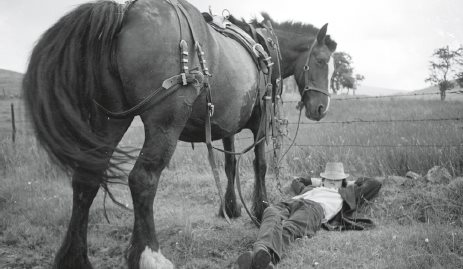
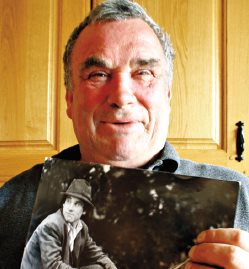
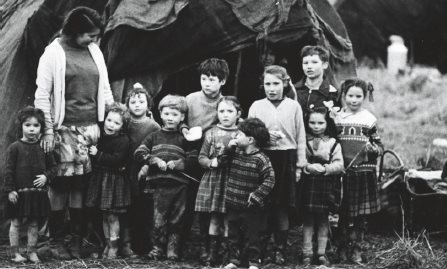
CONTENTS
Irish Travellers
FROM TINKERS TO TRAVELLERS
T HE TRAVELLING PEOPLE HAVE, FOR GENERATIONS, STOOD ON THE BOTTOM rung of Irelands social and economic ladder, a poor and stigmatized minority group. Until the 1960s most traveled through the countryside, at first on foot and later in horse-drawn carts and wagons, performing a variety of trades and services. Despite the value of the services they provided, they were regarded as inferior and regularly discriminated against, especially once they began migrating to urban areas in search of work. They were commonly called tinkers (from the trade of tinsmithing), knackers (from the practice of selling old horses for slaughter), and, beginning in the 1960s, itinerants (the less pejorative term introduced by government).
Although their lifestyle was and continues to be outwardly similar to that of English Gypsies or Roma, the Travelling People are native to Ireland. They are one of numerous indigenous nomadic groupsincluding the Swedish Resande, Norwegian Taters, Dutch Woonwagonbewoners, and Scottish Travellersthat have existed in Western Europe. Today approximately 29,000 Travellers live among a population of 4.5 million settled Irish, and they remain one of the least assimilated of Europes itinerant groups.
The early history of Irelands Travelling People is obscure. Being illiterate, they left no written records of their own. As poor people living on the margin of settled society, they were largely ignored in Irelands recorded history and literary works. Genetic research conducted in the 1970s and an analysis of the DNA of forty individuals in 2010 clearly show, however, that Travellers are native to Ireland and have lived there as long as anyone. Such research also conclusively shows that they are not Roma. Beyond that, only one thing is certain: not all Travelling families originated at the same time or in the same way. Some families nomadism dates back centuries, while for others it is more recent. And many have genealogies mixed with both Travellers and settled people. Some undoubtedly began to travel as itinerant craftsmen and specialists because of the limited demand for their work in any one place. Others were originally peasants and laborers who voluntarily went on the road to look for work or else were forced onto it by eviction or for some personal reasona problem with drink, the birth of an illegitimate child, or marriage to a tinker.

John Ward fashions tins on the roadside outside Galway City in 1972. Chimney sweeping equipment is tied to his bicycle.
Throughout Irelands history a variety of occupational groups were nomadic. As early as the fifth century, metal workers or whitesmiths traveled the countryside fashioning jewelry, weapons, and horse trappings out of bronze, silver, and gold in exchange for food
In the twelfth century, tinker and tynkere appear in written records as trade or surnames for the first time. (The word tinker derives from the sound of the smiths hammer striking metal.) By the sixteenth century, itinerant tinkers were numerous enough in Ireland and Scotland to give newly arriving Roma stiff competition. Tinkers are specifically mentioned in the numerous statutes enacted from the sixteenth to the nineteenth century in the British Isles against vagrancy and begging. By 1835, when Britains Poor Inquiry Commissioners visited Irelandthen a British colonyto collect evidence on the state of the poor, local people differentiated tinkers from other people then living on the road. A resident of county Mayo reported, The wives and families accompany the tinker while he strolls about in search of work, and always beg. They intermarry with one another, and form a distinct class. A resident of Donegal similarly stated that they were the only class of beggars whose habits of mendicancy become hereditary; the other vagrants beg through [temporary] want of employment. Yet another respondent described three generations traveling the roads together, which, at the very minimum, meant that they had been itinerant since the late 1700s.
At the outbreak of World War II, Irelands Travellers were still a nomadic and rural people. Their most common occupations, besides making tinware, were cleaning chimneys, dealing in donkeys and horses, peddling small household wares, and picking crops, all in exchange for food, clothing, and cash. While many Travellers had a primary trade, they were also opportunistic. As one man we knew astutely stated, The tinker was a man who thought of a hundred ways of surviving. If he was selling delph [crockery] and the delph failed him, hed switch to something else. Maybe hed buy something else or resell it. There were always a hundred ways out. This was the real tinker, not the tinsmith. He was a better survivor than the rest. Travellers also made clothespins, brooms, and baskets; repaired umbrellas; sharpened knives; collected and recycled horse hair, feathers, and bottles; and exploited the superstitions and hopes of the settled population through begging, fortune telling, and bogus money-making schemes. They were truly jacks of all trades.
Next pageFont size:
Interval:
Bookmark:
Similar books «Irish Travellers: The Unsettled Life»
Look at similar books to Irish Travellers: The Unsettled Life. We have selected literature similar in name and meaning in the hope of providing readers with more options to find new, interesting, not yet read works.
Discussion, reviews of the book Irish Travellers: The Unsettled Life and just readers' own opinions. Leave your comments, write what you think about the work, its meaning or the main characters. Specify what exactly you liked and what you didn't like, and why you think so.

